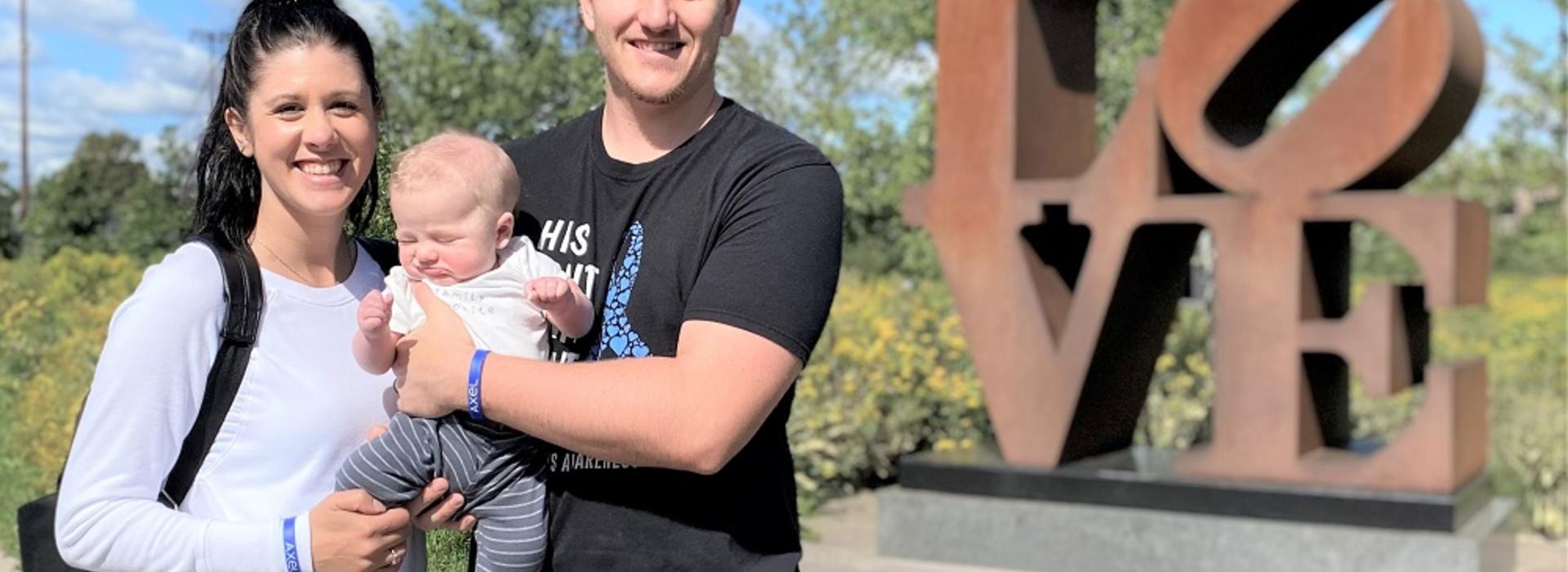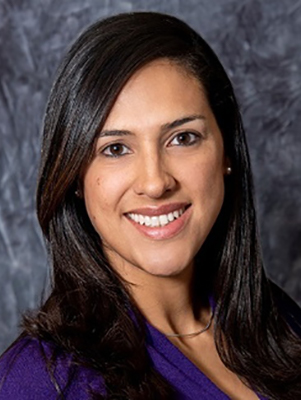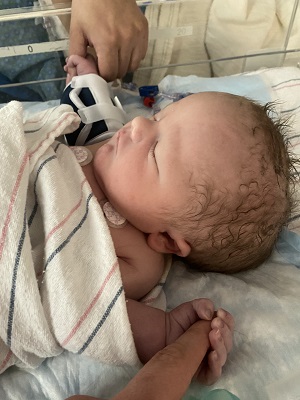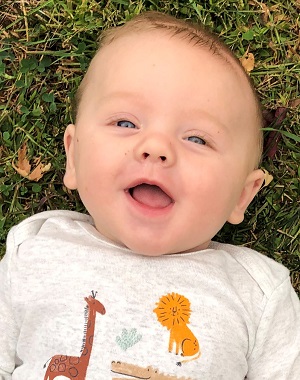
Parents of newborn with severe hydrocephalus believe they found the best place for his care
When Grand Forks, ND, resident, Nicole Letofsky, went in for a glucose test during the 28th week of her pregnancy, she was given the opportunity to have a 3D ultrasound. “They noticed on the image that the baby’s head was significantly enlarged,” she said. As a result of what the local physicians saw on the ultrasound, Nicole and Logen, her husband (both pictured above), were referred to specialists in Fargo, who confirmed that their son, Axel, would be born with severe hydrocephalus.
According to the National Institute of Neurological Disorders and Stroke, hydrocephalus is an abnormal buildup of fluid in the ventricles, which are cavities deep within the brain. This excess fluid causes the ventricles to expand, putting pressure on the surrounding brain tissue. In time, this can interfere with normal brain development and in extreme cases it results in death.
We were terrified
“Neither of us had ever heard of hydrocephalus,” said Nicole. “We didn’t know what it was, and we were terrified. We didn’t know what kind of life Axel would have. There was even a chance of mortality.”
The Letofskys needed a higher level of care than they could receive in their home state. And it was important that the next steps they took for Axel would enable them to be near family. Because Nicole was from the Twin Cities and familiar with the University of Minnesota, where her brother is a medical student, they chose Masonic Children’s Hospital for their baby’s birth and postnatal care.
It was there that Axel would get the brain surgery he needed to mitigate the effect of the hydrocephalus (there is no cure). Pediatric neurosurgeon Carolina Sandoval, MD, would perform that surgery. She and Nicole met virtually prior to Axel’s birth on May 18, 2021.
From the beginning

“We are part of the process from the very beginning,” said Dr. Sandoval (pictured at left). “We collaborate with our Maternal-Fetal Medicine colleagues when they identify a prenatal issue. They’re good at connecting the pregnant mom with the appropriate specialists, helping them understand what to expect after the delivery.”
Dr. Sandoval discussed the severity of Axel’s hydrocephalus with Nicole. “We talked about which procedure he was a better candidate for because, in these cases, there are no nonsurgical options,” said Dr. Sandoval. “We could either leave a shunt behind or use an endoscope to create an alternative pathway for the excess fluid. In Axel’s case, the shunt was a more suitable choice.”
When Axel was born, Nicole and Logen got to see him briefly before he was taken to the NICU (newborn intensive care unit). “Dr. Sandoval was waiting to assess him,” said Nicole. Assured by the neonatologist that Axel was stable and ready to have the shunt surgery, Dr. Sandoval performed it the next day.
No major challenges
“The procedure itself is routinely performed and we encountered no major challenges,” said Dr. Sandoval. “We had to manage the scalp and incision carefully, because the skin was so thin, and everything was under quite a bit of tension.”

Axel came through the surgery with flying colors and his postoperative exams have looked good as well. “His ventricles are coming down and the surrounding brain tissue is increasing,” said Dr. Sandoval. “The shunt is working and doing what we expect it to do.”
Impact on Axel’s vision
One of the potential long-term impacts from Axel’s hydrocephalus is related to his vision. “The way in which the dilatation of his ventricles occurred prenatally was such that his cortical mantle was almost nonexistent particularly in the occipital region,” explained Dr. Sandoval. “The fluid-filled cavities expanded particularly in the back part of his skull preventing his brain from adequately developing in that area, which is responsible for vision. We’re concerned about how much his vision can recover. It’s a matter of time at this point, to see how much his brain is able to catch up and develop normally.”
At almost five months old, Axel looks like a happy, healthy, beautiful little boy, according to Nicole. “We do a lot of monitoring and work with several different providers,” she said. “We come to the U every few months for additional checkups. His vision continues to be our biggest concern.”
Everyone has their own story

Throughout this process, Nicole and Logen learned that everyone with hydrocephalus has their own story, their own diagnosis. “We found it really helpful to connect with others familiar with the condition, but we also had to remind ourselves that no two people will take the same path,” said Nicole. “That’s extremely important because you can read things online until you’re blue in the face. We took in what we could and reminded ourselves that Axel will create his own path and it’s up to us to help him live the best life possible.”
Since their son was born, Nicole and Logen have also learned to embrace the small victories. “We celebrate every piece of good news we get,” said Nicole.
Axel’s parents believe that he wouldn’t be where he is today without the unconditional love and support they received from family and friends, as well as every single doctor, nurse, or staff member at Masonic Children’s Hospital who touched his life. “And thank heaven there are amazing people like Dr. Sandoval,” said Nicole.
Keywords:
#hydrocephalus
#pediatricneurosurgery
#shunt
#MasonicChildrensHospital



